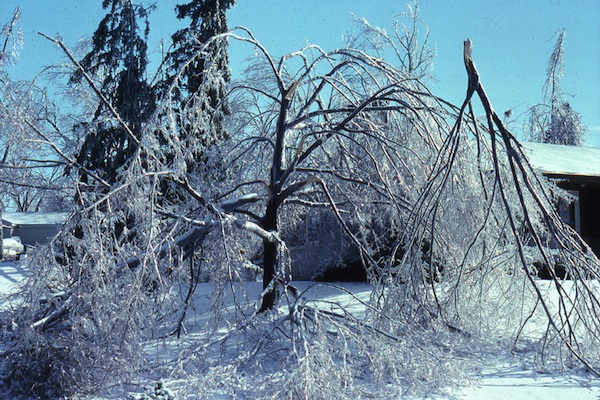From Rosie Lerner, Purdue Extension Consumer Horticulture
In typical ice storms, the trees hardest hit are weak-wooded species such as silver maples, Siberian elms, river birch and willows. Trees that have been previously topped generally respond by regrowing numerous weak branches that are even more susceptible to breakage. These are among the first of the branches that fall during an ice storm.
Evergreen trees and shrubs are also particularly vulnerable because their foliage tends to collect more snow and ice loads. Evergreen trees, such as pine and spruce, are not capable of filling in new top growth where the damage has occurred, so the natural shape of the tree will be permanently affected. Damaged shrubs often can be pruned and encouraged to regrow.
Protection not practible
There’s not much that can be practically done to protect large trees from such damage. For multi-stemmed shrubs that can be reached safely, you can help prevent or at least minimize damage from heavy snow and ice loads by bundling stems together using burlap or canvas or simply tie with cord or twine.
After storm sweep
Once the storm subsides, carefully remove heavy snow as soon as possible by using a soft broom or rubber rake. However, don’t try to remove ice. Damage to the bark is more likely in trying to remove ice than simply allowing it to melt on its own.
Other storm damage tips:
